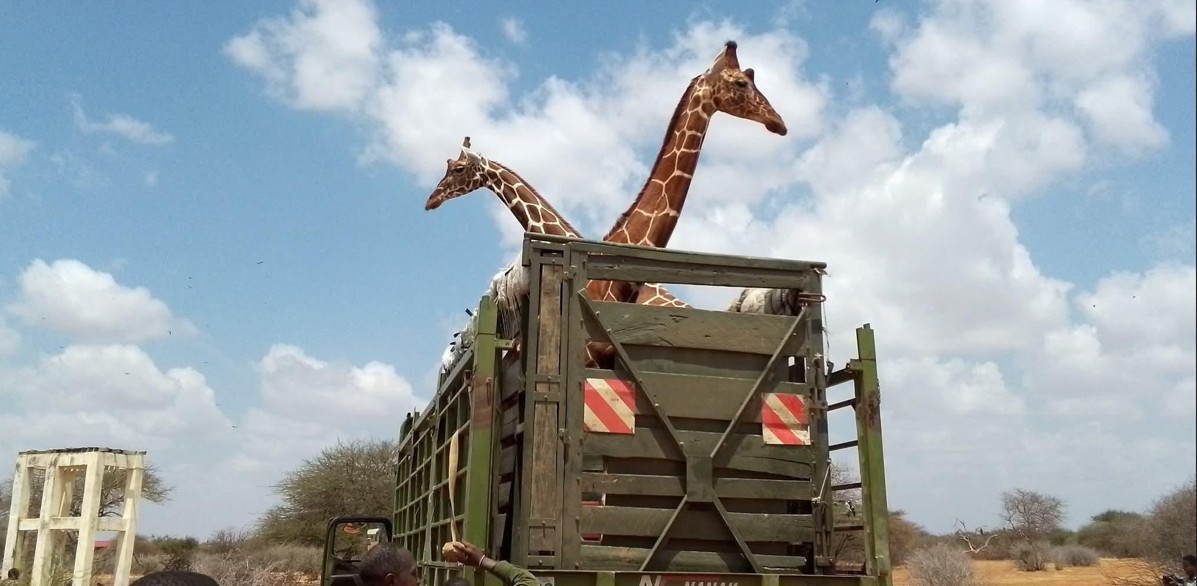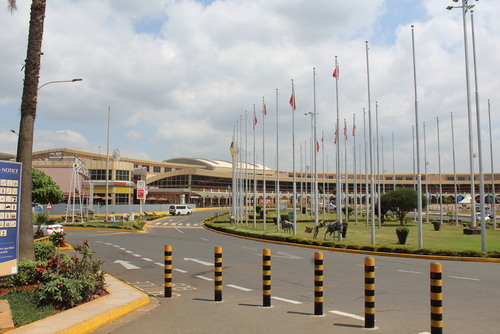KWS moves reticulated Somali giraffes from Wajir to Nanyuki in major conservation effort

Rescued from poaching threats, two endangered Somali giraffes are moved to Nanyuki Range Park to ensure their safety and natural development.
The Kenya Wildlife Service (KWS) has successfully relocated two reticulated giraffes from Wajir to the Nanyuki Range Park as part of ongoing efforts to strengthen wildlife conservation and protection measures.
The move followed expert assessments that concluded the giraffes’ continued presence in Wajir put them at risk due to close human contact, increasing poaching threats, and habitat encroachment.
More To Read
- Wildlife compensation claims hit Sh3.5 billion as thousands of Kenyans wait years for payments
- KWS rolls out new ‘KWSPay’ system for seamless park payments
- Government gazettes transfer of Amboseli National Park management to Kajiado County
- KWS rescues cheetah cub raised by woman in Garissa
- Court halts implementation of KWS' park entry fee hike
- Revised national park entry fees and vehicle charges
The animals were rescued three years ago as young calves after their mothers were killed. Since then, they had been cared for at the Wajir KWS station, where they became accustomed to regular human presence.
During this time, KWS staff provided food, medical attention, and protection to ensure their survival. The bond that developed between the giraffes and their caretakers led to their relocation, which was deemed a logistical and conservation necessity.
According to KWS officials, the relocation aims to safeguard the long-term safety and natural development of the giraffes.
They explained that animals raised in human environments often become less cautious and may struggle to survive if released into the wild without supervision.
Secure environment
The move to Nanyuki was therefore seen as a crucial step in providing a secure environment where the giraffes could gradually adapt to natural conditions while remaining closely monitored.
Jimale Rashid Hassan, head of KWS operations in Wajir County, said the relocation was carried out purely for protection and conservation purposes.
He noted that residents have limited regard for wildlife, making it unsafe for the giraffes to remain in the area.
“The people do not care about wildlife, and releasing the two giraffes to the bush would have endangered their lives,” he said.
Jimale added that the transfer was intended to give the animals a chance to thrive in a safer, more natural setting.
“We are taking them to a better place so that they can survive. We cannot release them at the moment, as you know, poaching targeting giraffes is currently high,” he said.
Native to northern Kenya
The reticulated giraffe, also known as the Somali giraffe, is native to northern Kenya and parts of Somalia. It is currently listed as endangered due to a steady population decline caused by habitat loss, fragmentation, and human-wildlife conflict.
Conservationists estimate that only a small number remain in the wild, prompting increased efforts by KWS and other partners to protect and rebuild their numbers through programs such as habitat restoration and controlled translocation.
KWS confirmed that the giraffes will be closely monitored in Nanyuki to assess their adaptation to the new environment.
The park offers a safer and more natural habitat where the animals can graze and roam freely within a protected area.
The agency emphasised that this relocation forms part of a broader national strategy to safeguard endangered species and strengthen wildlife management systems in Kenya.
Top Stories Today
Reader Comments
Trending











































